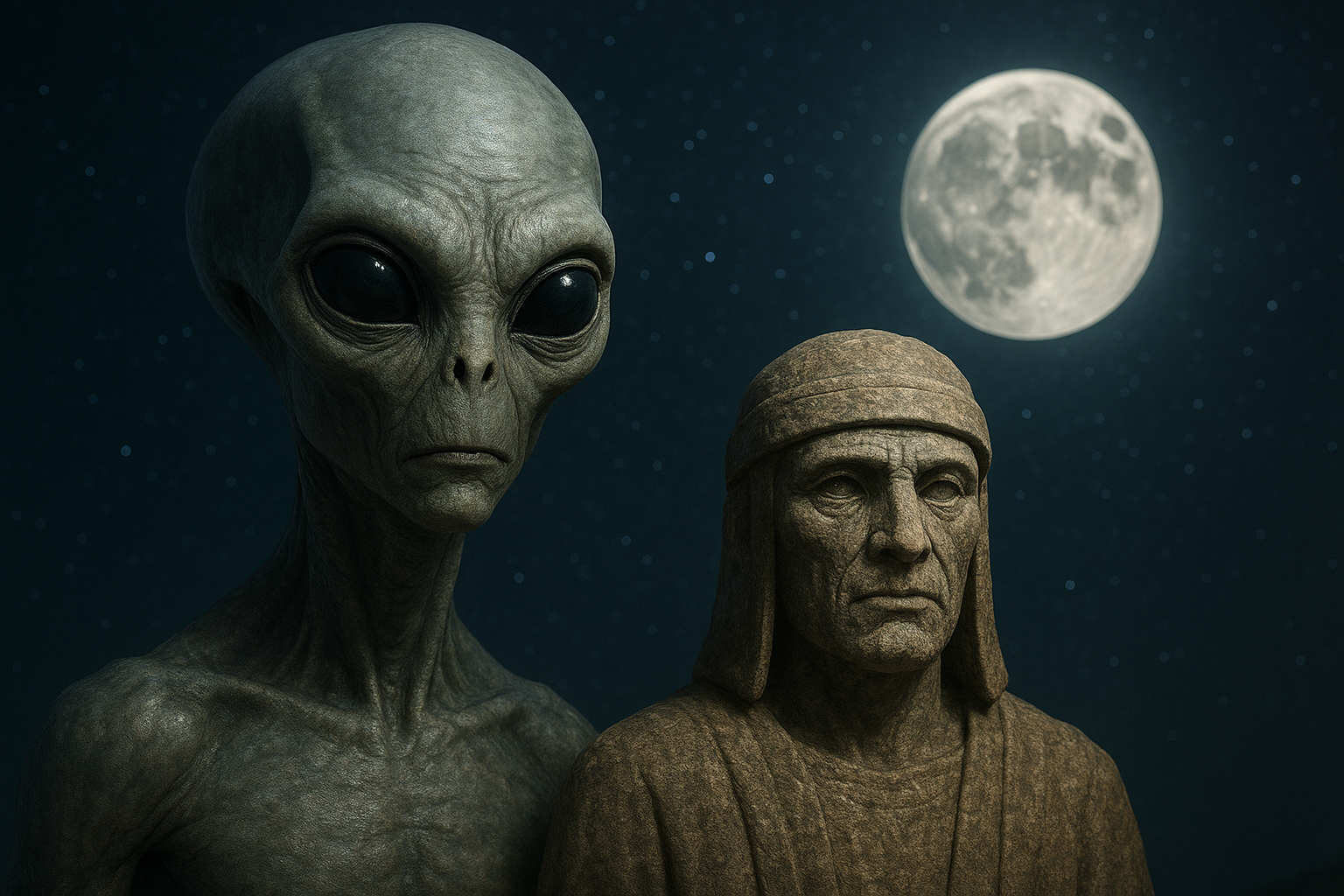Alien Epics: Extraterrestrial Legends Across the Ages
Throughout human history, tales of beings from beyond Earth have captivated our imaginations. Across cultures and centuries, narratives about extraterrestrial entities have been woven into the fabric of folklore, religion, and science. Whether these are interpreted as mythical, supernatural, or based in potential reality, they offer insights into human creativity and curiosity about the unknown.
Ancient Observations and Mythologies
- Sumerian Civilizations: Among the first known civilizations, the Sumerians of Mesopotamia are often cited in discussions about ancient alien theories. The Sumerian texts refer to the Anunnaki, deities whose name translates to “those who came from the heavens to Earth.” Some theorists suggest that the Anunnaki were actually extraterrestrial visitors who influenced Sumerian culture and technological development.
- Indian Epics: The Mahabharata and the Ramayana, two of India’s epic tales, contain accounts of flying vehicles called Vimanas. These texts describe these crafts as piloted by gods, suggesting incredible technological devices not dissimilar to modern interpretations of spaceships. According to Ancient Aliens scholar Giorgio A. Tsoukalos, “Vimanas were perhaps the first UFOs—objects flying in the sky that carried beings not from Earth” (Ancient Aliens, History Channel).
- Aboriginal Dreamtime: In Australian Aboriginal culture, Dreamtime myriads of creation myths feature celestial beings that descended from the stars to shape the world. The Wandjina spirits, known for their distinct large eyes and absence of mouths in Aboriginal rock art, have been speculated by some to represent ancient alien visitors.
Medieval Interpretations and Mysteries
- The Green Children of Woolpit: In 12th-century England, the legend of the Green Children speaks of two children with green skin found in Woolpit, Suffolk. They spoke an unknown language and claimed to come from a subterranean world called “Saint Martin’s Land.” Scholar Paul Harris in “The Green Children of Woolpit: A Medieval Mystery in Castles and Myths” explores the idea that these children might represent encounters with another dimension or realm, reflecting medieval interpretations of otherworldly beings.
- Renaissance Celestial Phenomena: In 1561, residents of Nuremberg, Germany, reportedly observed a mass sighting of celestial objects. The event was illustrated in a broadsheet by Hans Glaser, which depicted spheres, crosses, and cylinders “fighting” in the sky. Some modern UFO enthusiasts consider this one of the earliest potential sightings of an extraterrestrial event, though historians often cite it as a misinterpretation of atmospheric phenomena or comets.
Modern Narratives and Speculation
- The War of the Worlds: H.G. Wells’ 1898 novel, The War of the Worlds, arguably set the stage for modern extraterrestrial narratives. This seminal work portrays a Martian invasion and crystallized many common tropes of alien storytelling. Wells wrote at a time when scientific understanding of Mars was burgeoning, fueling both fears and fascination with the idea of otherworldly life.
- The Roswell Incident: Perhaps one of the most infamous events in UFO lore, the 1947 crash near Roswell, New Mexico, kickstarted widespread public interest in potential government cover-ups of alien encounters. What was initially reported as a “flying disc” was later retracted as a weather balloon by the U.S. military, leading to decades of speculation and conspiracy theories.
- Area 51: Surrounding the mystery of Roswell is the intrigue of Area 51, a high-security military base in Nevada often associated with alien research and reverse engineering of extraterrestrial technology. Although the U.S. government only officially acknowledged Area 51 as a site of flight testing and development in the 1990s, it has remained at the center of alien lore and conspiracy theories.
Extraterrestrial Influences and Popular Culture
The 20th and 21st centuries have seen an explosion of alien narratives in popular culture. Movies such as E.T. the Extra-Terrestrial, Star Wars, and Independence Day explore themes of alien contact, invasion, and co-existence, tapping into deeply rooted human stories about “the other” and projecting our hopes and fears about advanced powers beyond our comprehension.
“Science fiction is the only genre that enables society to look into the future, seeing how things might develop, and examine how society might change,” says author Arthur C. Clarke. These narratives have not only entertained but also inspired real-world explorations of space and the potential for life beyond Earth.
Scientific Pursuits and the Search for Extraterrestrial Life
- The Search for Extraterrestrial Intelligence (SETI): Efforts like SETI have sought to detect signals from other civilizations, using sophisticated technology to scan the skies. Although definitive evidence remains elusive, scientists, including the famed astrobiologist Dr. Carl Sagan, have posited that the vastness of the universe suggests that intelligent life likely exists elsewhere.
- Exoplanet Discoveries: Since the 1990s, thousands of exoplanets have been discovered, some of which reside in the so-called “habitable zone” where conditions may support life. These discoveries have reignited questions about the potential for alien life and pushed the boundaries of our understanding of the universe.
The Future of Alien Epics
The stories about extraterrestrial life, whether mythological musings from ancient cultures or hi-tech imaginings of modern storytellers, reflect humanity’s enduring quest for knowledge and self-understanding. As our technology and scientific methods evolve, so too will our alien epics—driven by curiosity, cultural shifts, and the mysterious allure of the stars.
While we await definitive answers, these legends and narratives continue to inspire generations of dreamers, scientists, and those who gaze toward the heavens. In the end, the epic tales surrounding extraterrestrials are less about proving their existence and more about exploring the expansive limits of human imagination.


